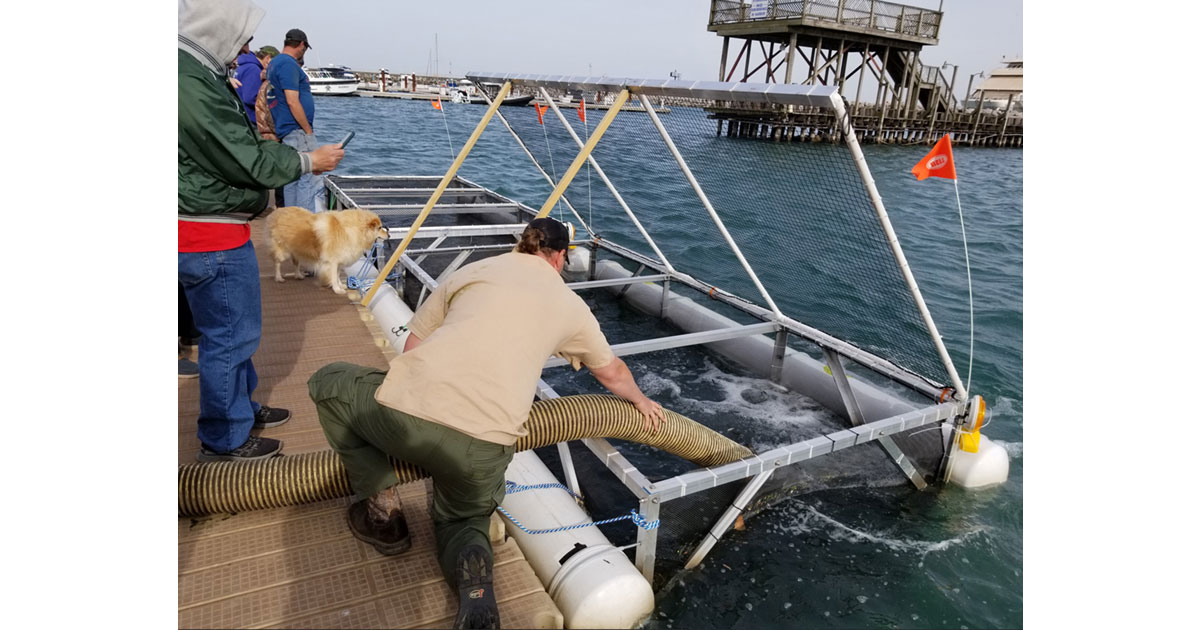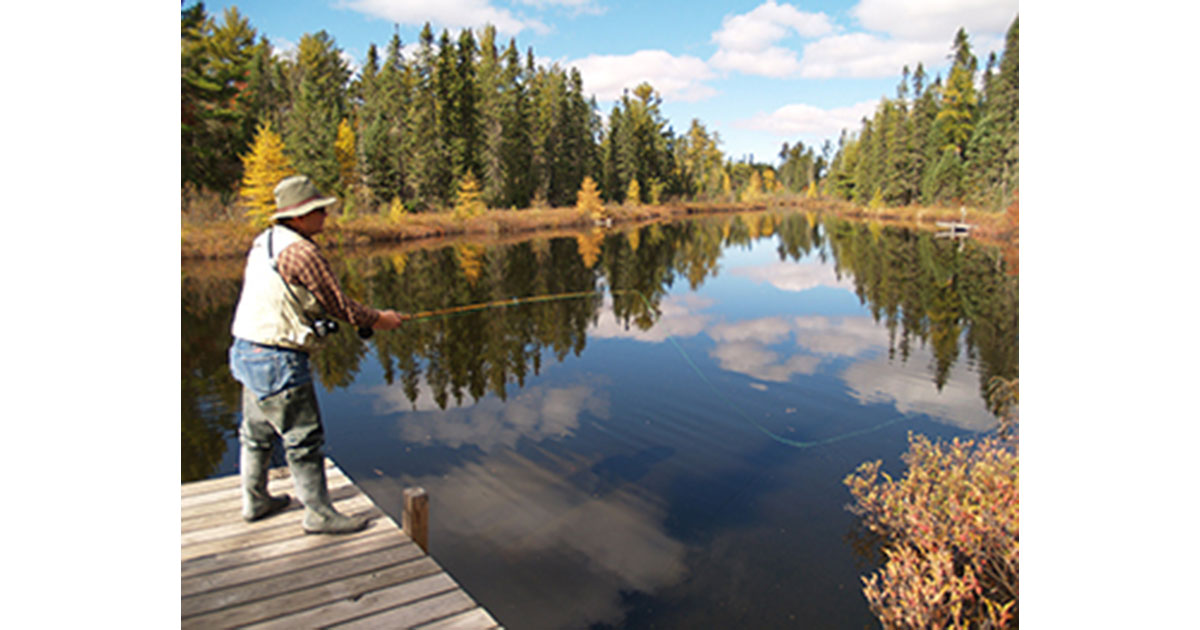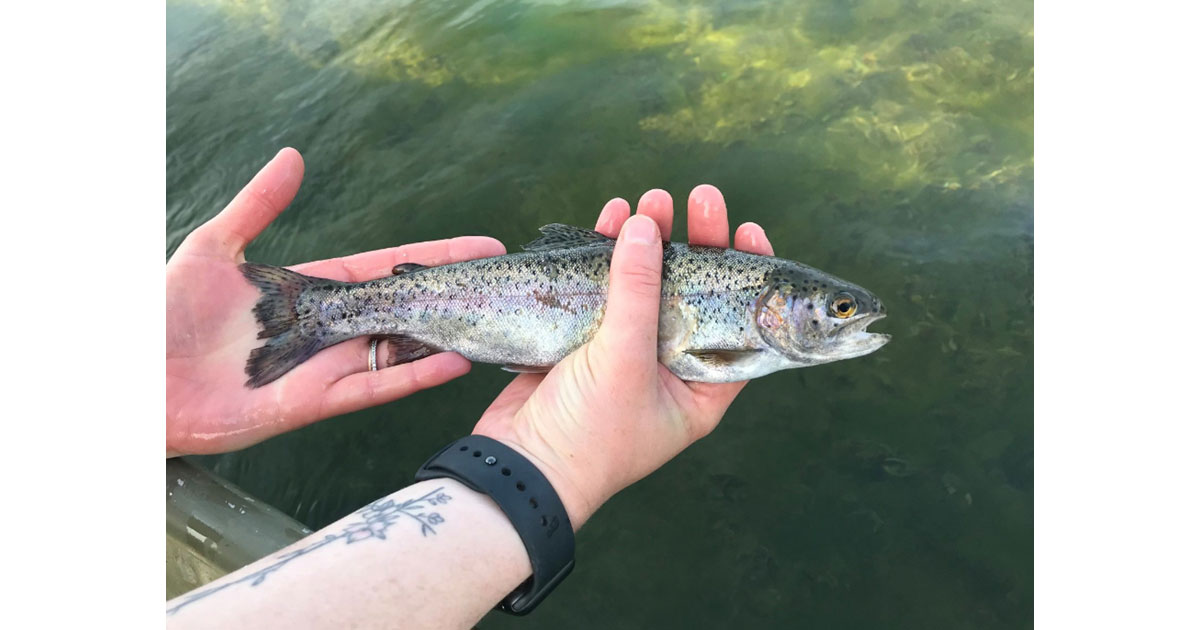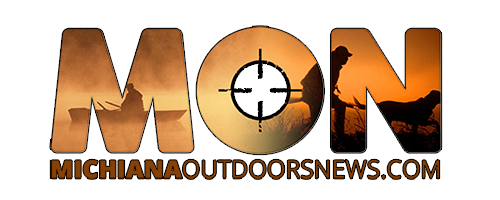- Details
IDNR Report The Indiana Department of Natural Resources (DNR) will stock rainbow trout in Fort Wayne and Huntington Oct. 18–19. Shoaff Park and Spy Run Creek in Fort Wayne will each receive 200 fish, and Memorial Park in Huntington will receive 300 fish. The stocked fish will average 12 to 14 inches in length. Shoaff Park is on Fort Wayne’s northeast side at 6401 St. Joe Road. The pond is at the west end of the park, along the St. Joseph River. Spy Run Creek is in Franke Park, across the parking lot from the Fort Wayne Children’s Zoo at 3411 Sherman Boulevard. There will be no events associated with the Fort Wayne stockings, so fishing can begin after 3 p.m. on Oct. 18. Memorial Park features two ponds and is west of downtown Huntington at 1200 West Park Drive. Only the north pond will be stocked. The Memorial Park Pond stocking will include a family fishing event that begins at 7 a.m. on Saturday, Oct. 19. No trout fishing will be allowed before the event starts. Participants are asked to bring their own equipment. All anglers age 18 and older must have a valid Indiana fishing license and trout stamp to fish. The catch limit per angler is five trout. To learn more about fish stockings, visit on.IN.gov/fish-stocking.
- Details
MDNR Report There are many joys of fall fishing: the salmon run, cooler weather and gorgeous fall foliage. Another benefit is the opportunity to help with important fisheries research by telling the Michigan Department of Natural Resources about any tagged or marked fish you catch. “Marking and tagging fish helps DNR researchers understand fish survival, age, growth and movement, as well as the amount of natural reproduction of a species,” said Jay Wesley, the DNR’s Lake Michigan basin coordinator. Through mass marking assistance by the U.S. Fish and Wildlife Service, Great Lakes states mark popular gamefish like steelhead, Chinook salmon, Atlantic salmon, brown trout and lake trout. These marks include both clipped adipose fins and coded-wire tags. The DNR has used a coded-wire tag program to mass mark various fish species in Michigan since the 1980s. The program involves implanting a small, coded-wire tag, which is invisible to the naked eye, into the snout of a fish. The tag is small — like the tip of a lead pencil — so lab technicians are needed to remove it. Trout and salmon containing a coded-wire tag can be identified because their adipose fins (the small, fleshy fin between the dorsal and tail fins) have been removed. The DNR asks that anglers who catch a fish with a clipped adipose fin remove and freeze the head of the fish and turn it in at a local drop-off station in Michigan. Anglers may also come across other fish tags or markings including: Report marked fish through the DNR’s Eyes in the Field app to provide information such as species, tag details, photos, and date and location caught, or by contacting a local DNR fisheries office. Some tags can be reused, and some tags offer small monetary rewards for reporting them. Learn more about marked and tagged fish. Fish Tagging
Fish Tagging Jaw Tag
Jaw Tag
- Details
IDNR Report
 Salmon net pen project
Salmon net pen project
The first year of a cooperative project between the Indiana DNR and the Lake County Fish and Game Protective Association (LCF&G) to improve Chinook salmon fishing in Lake Michigan successfully concluded earlier this month.
The project used a floating enclosure built by LCF&G to acclimate Chinook salmon stocked by the DNR at East Chicago Marina. The fish were stocked into the enclosure on April 22 and successfully released by LCF&G on May 4.
- Details
MDNR Report
 Michigan Trout Season
Michigan Trout Season
Michigan’s statewide trout opener approaches, and anglers across the state are making plans for April 27, the last Saturday of the month.
Beyond gathering gear and choosing the perfect spot, here are some helpful tips to protect our natural resources and ensure a great experience without any snags.
Buy a license
The 2024 fishing license year began April 1, and there are several ways to get a new license.
Purchase online at Michigan.gov/DNRLicenses or at DNR customer service centers across the state. Many sporting good outlets and service stations also sell fishing licenses.
Licenses can be purchased on the Michigan DNR Hunt Fish app, too. Access license info, maps, certificates and more on the go – download from the App Store for Apple devices and the Google Play Store for Android devices.
If you have questions about buying a license, contact the DNR’s license sales help desk at 517-284-6057.
Check the regs
It’s always a good idea to check regulations before heading out on any outdoor excursion.
Michigan fishing regulations, with the latest changes highlighted in red print, are available for download to your cellphone through the DNR Hunt Fish app, providing handheld access even when no phone service is available. Printed copies are also available for free where fishing licenses are sold or online at Michigan.gov/DNRRegs.
Color-coded regulation maps also are available online and can be downloaded or printed for easy access.
Protect our waters
Michigan’s trout streams are under increasing threat from harmful species that affect habitat and food sources for trout and other fish. Both didymo (rock snot) and New Zealand mudsnail can be moved to new locations on waders, nets and gear. To protect our waters, be prepared and take the time to decontaminate before moving to a new river or stream.
Didymo is a microscopic diatom (single-celled alga) that thrives in cold, low-nutrient streams. Under the right conditions, prolific growth – or blooms – result in thick mats that can cover river and stream bottoms.
Didymo blooms were first observed in Michigan waters in 2015 in the St. Marys River and then the Manistee and Boardman rivers in 2021 and 2022, respectively. Didymo has the potential to spread to new areas when cells attach to anglers’ waders and gear.
New Zealand mudsnails are only about 1/8 inch long, but they can change aquatic habitats by reaching extremely high densities and outcompeting native macroinvertebrates, leaving fish food in short supply.
New Zealand mudsnail populations are known to be present in the Au Sable, Boardman, Grass, Pere Marquette, Pine and Upper Manistee rivers in Michigan. Mudsnails can survive out of water for several days. Because of their small size, they are easily transported on boats, anchors and fishing gear such as waders and nets.
Learn about more actions anglers and boaters can take to prevent the spread of invasive species.
- Details
IDNR Report
 Indiana Trout
Indiana Trout
The Indiana DNR Division of Fish & Wildlife plans to stock nearly 63,000 rainbow and brown trout across the state this spring in preparation for inland trout fishing season, which, for inland streams, opens Saturday, April 27.
Thirty-five bodies of water across 21 counties are anticipated to receive fish before and after opening day.
Most of the lake stockings of rainbow trout were done last month, starting the week of March 11. Anglers don’t have to wait to fish for those, as trout fishing on inland lakes is open year-round.
For streams, more than 23,000 rainbow trout are expected to be stocked in the days leading up to opening day. Several sites will get additional rainbow trout stockings until Memorial Day weekend.
In addition to the rainbow trout stockings, 10 bodies of water will receive brown trout stockings in May.
To find a stocked stream near you, see this year’s trout stocking plan at on.IN.gov/fish-stocking.
Trout will bite on a variety of artificial baits such as spinners and flies, but natural baits such as worms and bee moths tend to be the most popular.
The bag limit for trout in inland waters other than Lake Michigan and its tributaries is five per day with a minimum size of 7 inches. No more than one of an angler’s catch can be a brown trout. There is no size limit for trout on inland lakes except for harvested brown trout caught below the Brookville Lake tailwater or from Oliver, Olin, or Martin lakes, which must be 18 inches or larger.
To fish for trout, anglers age 18 and older must have an Indiana fishing license and a trout/salmon stamp. To purchase yours for this year, visit on.IN.gov/INHuntFish.





